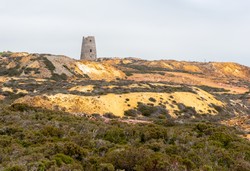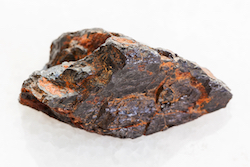Effect of mineralogy on the development, composition and functioning of microbial communities
Over the last decade scientific evidence has shown that the chemical composition of rocks plays a crucial role in shaping the structure of the microbial communities that inhabit them. To date, most of this work has been conducted on soil minerals and on minerals of volcanic origin such as lava deposits. The PARMIN project was the first study to consider the potential effects of minerology on the structure of mineral-associated microbial communities in an acid mine environment. Such an environment represents extreme conditions for microbial life due to limited organic compounds, extreme acidity, and often high concentrations of elements that can prove toxic to microorganisms, like copper and lead. Microbiological studies of acid mines have revealed the presence of the bacterial genera Leptospirillum, Acidithiobacillus, Ferrovum and Acidiphilium, and the archaea genera Ferroplasma. These microorganisms are adapted to and prefer the acidic conditions, resulting in their classification as acidophiles. The project addressed the question of the effect of mineralogy on the composition of microbial communities by focusing on the minerals found in the disused copper mine at Mynydd Parys in north Wales, the United Kingdom. Once the largest supplier of copper in the world, Mynydd Parys is representative of many similar abandoned copper mines in the United Kingdom and further afield. Researchers characterised the structure of established bacteria and archaea communities inhabiting a range of minerals and monitored their development and activities on two primary minerals, chalcopyrite and sphalerite. Scientists also isolated archaea in pure culture from Mynydd Parys. PARMIN showed that even within an extreme acidic environment, mineral chemistry has an influence on the structure of microbial communities. It also revealed that such mineral environments are home to unexpectedly high microbial diversity and also novel microorganisms.






